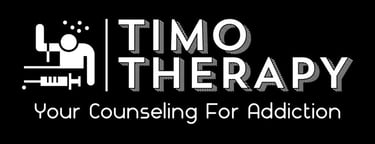Understanding the Differences Between Heroin and Alcohol Withdrawal: Miserable vs. Fatal
Discover the difference between a 'miserable' withdrawal and a withdrawal that can potentially become 'fatal'. We will discuss the withdrawals of heroin vs. the withdrawals from alcohol, and which one can turn fatal.
TRENDING & CONTROVERSIAL TOPICS


Introduction to Substance Withdrawal
Substance withdrawal is a complex and multifaceted process that occurs when an individual reduces or ceases the intake of a substance on which their body has become dependent. This physiological and psychological response is the body's attempt to re-establish equilibrium after prolonged exposure to a substance, which has altered normal bodily functions. Withdrawal symptoms can range from mild discomfort to severe, life-threatening conditions, depending on the substance and the level of dependency.
Understanding the differences between various types of withdrawal is crucial for effective management and treatment. Different substances interact uniquely with the brain and body, leading to distinct withdrawal syndromes. For instance, the withdrawal process for heroin, a powerful opioid, differs significantly from that of alcohol, a widely consumed depressant. Recognizing these differences can guide healthcare providers and individuals in developing appropriate strategies to cope with withdrawal, thereby improving outcomes.
Heroin is an illicit opioid that exerts a profound impact on the brain's reward system, leading to intense euphoria and a high potential for addiction. When heroin use is abruptly discontinued, the body reacts with a series of withdrawal symptoms, including severe muscle pain, nausea, vomiting, and intense cravings. These symptoms, while extremely uncomfortable, are generally not fatal.
In contrast, alcohol is a legal substance that, when consumed excessively over time, leads to physical dependence. Alcohol withdrawal can range from mild anxiety and tremors to severe complications such as delirium tremens (DTs), which can be fatal if not properly managed. The symptoms of alcohol withdrawal highlight the potential dangers associated with sudden cessation, necessitating medical supervision in severe cases.
By understanding the distinct withdrawal profiles of heroin and alcohol, individuals and healthcare providers can better prepare for and manage the challenges associated with discontinuing these substances. This knowledge is vital in creating effective treatment plans that ensure safety and support long-term recovery.
Heroin Withdrawal: An Overview
Heroin withdrawal is a challenging process that begins shortly after the last dose of the drug. The onset of symptoms typically starts within 6 to 12 hours and can peak around 72 hours. Although the withdrawal process is extremely uncomfortable, it is generally considered non-fatal. This distinction is important in understanding the significant physical and psychological discomfort individuals experience during withdrawal.
Common symptoms of heroin withdrawal include anxiety, muscle aches, insomnia, sweating, and gastrointestinal distress such as nausea and diarrhea. These symptoms can vary in intensity and duration based on several factors, including the length of heroin use, the amount used, and the individual’s overall health. Anxiety and agitation are often among the first signs, followed by more severe physical symptoms as the process continues.
During the peak of withdrawal, typically around the 72-hour mark, individuals often experience the most intense symptoms. Muscle aches can become severe, contributing to a general feeling of physical discomfort and restlessness. Insomnia can exacerbate feelings of fatigue and irritability, while excessive sweating and gastrointestinal issues can lead to dehydration if not properly managed.
As the withdrawal process moves into the decline phase, symptoms usually begin to subside within 5 to 7 days. However, some individuals may experience prolonged withdrawal symptoms, known as post-acute withdrawal syndrome (PAWS), which can persist for weeks or even months. PAWS may include mood swings, anxiety, and sleep disturbances, requiring ongoing management and support.
Despite the severe discomfort associated with heroin withdrawal, it is important to note that it is rarely life-threatening. Unlike alcohol withdrawal, which can result in fatal complications, the primary danger of heroin withdrawal lies in the potential for relapse. The intense cravings and discomfort may drive individuals back to using heroin, highlighting the need for comprehensive treatment and support during this critical period.
Stages of Heroin Withdrawal
Heroin withdrawal is a complex process that unfolds in distinct stages, primarily categorized into acute and post-acute phases. Understanding these stages is crucial for comprehending the challenges faced during recovery.
Acute Phase
The acute phase of heroin withdrawal typically begins within 6 to 12 hours after the last dose and can last up to 7 to 10 days. During this period, individuals experience severe physical symptoms which can be highly distressing. Common symptoms include intense vomiting, diarrhea, muscle pain, and severe abdominal cramps. Additionally, individuals often suffer from excessive sweating, insomnia, agitation, and restlessness. These symptoms are the body's response to the sudden absence of heroin, which it had become dependent on for normal functioning.
Post-Acute Phase
Following the acute phase, individuals enter the post-acute withdrawal phase (PAWS), which can last for several months and, in some cases, even years. Unlike the acute phase, PAWS is characterized predominantly by psychological symptoms. These include persistent anxiety, depression, mood swings, and intense cravings for heroin. The psychological toll can be significant, often leading to challenges in maintaining sobriety. Individuals may also experience cognitive difficulties, such as problems with memory and concentration.
Impact on Recovery
The different stages of heroin withdrawal can significantly impact an individual's recovery process. During the acute phase, the intensity of physical symptoms can be overwhelming and may necessitate medical supervision to manage pain and prevent complications. In the post-acute phase, the lingering psychological symptoms can undermine an individual's resolve to stay sober, making continued support and counseling essential. Understanding these stages and their respective challenges is vital for developing effective treatment plans and providing comprehensive care to those recovering from heroin addiction.
Alcohol Withdrawal: An Overview
Alcohol withdrawal can present a serious health risk, often characterized as potentially life-threatening. This condition arises from the physiological dependence on alcohol, which significantly alters the brain's chemistry. Chronic alcohol consumption leads to adaptive changes in the brain's neurotransmitter systems, creating a state of equilibrium that, when disrupted by sudden cessation, causes withdrawal symptoms.
Common symptoms of alcohol withdrawal include tremors, agitation, and anxiety, which typically manifest within hours after the last drink. These symptoms are indicative of the central nervous system's hyperactivity as it compensates for the absence of alcohol's depressive effects. As withdrawal progresses, symptoms can escalate to more severe manifestations such as seizures and delirium tremens (DTs). DTs are particularly dangerous, marked by severe confusion, rapid heartbeat, high blood pressure, and hallucinations. If not promptly and effectively managed, DTs can be fatal.
The timeline for alcohol withdrawal symptoms generally follows a predictable pattern. Initial symptoms often appear within 6 to 12 hours after the last drink, peaking around 24 to 48 hours. Severe symptoms, including seizures and DTs, may occur between 48 to 72 hours. However, the risk of severe withdrawal varies depending on several factors, including the duration and intensity of alcohol use, the individual's overall health, and the presence of co-occurring medical or psychiatric conditions.
Given the high stakes involved, medical supervision is crucial during alcohol withdrawal. Health professionals can administer medications to mitigate symptoms and reduce the risk of complications. The process underscores the need for a well-structured detoxification plan, emphasizing safety and comprehensive care.
Stages of Alcohol Withdrawal
Alcohol withdrawal is a complex process that unfolds in three distinct stages, each carrying its own set of symptoms and risks. The first stage, which generally begins within 6 to 12 hours after the last drink, is characterized by mild symptoms such as anxiety, insomnia, nausea, and abdominal pain. During this initial phase, individuals may experience an overwhelming sense of restlessness and agitation, which can make it difficult to sleep or focus.
As the withdrawal progresses to Stage 2, typically occurring within 24 to 48 hours, the symptoms intensify and can become more severe. This stage often includes high blood pressure, increased heart rate, and elevated body temperature. Tremors, sweating, and confusion may also manifest, contributing to a sense of physical and mental distress. The heightened cardiovascular activity poses significant risks, necessitating close monitoring to prevent complications.
The final stage, known as Stage 3, usually begins 48 to 72 hours after the last drink and can extend up to a week or more. This stage is marked by potentially life-threatening symptoms such as seizures and delirium tremens (DTs). DTs, in particular, are characterized by severe confusion, hallucinations, and profound agitation. The mortality rate associated with untreated delirium tremens can be as high as 15%, underscoring the critical need for medical supervision during this period.
Given the serious nature of alcohol withdrawal, medical supervision is paramount. Healthcare professionals can provide medications and supportive care to mitigate the symptoms and reduce the risks associated with each stage. Without proper medical intervention, the progression from mild symptoms to life-threatening complications can occur rapidly, making alcohol withdrawal a potentially fatal condition if not managed appropriately.
Comparing Heroin and Alcohol Withdrawal
Withdrawal from substances like heroin and alcohol presents distinct challenges and risks, necessitating a clear understanding of their differences and similarities. Heroin withdrawal, although profoundly uncomfortable, is generally not fatal. Symptoms typically peak within 24 to 48 hours after the last dose, including intense cravings, muscle pain, nausea, vomiting, and insomnia. The experience is akin to a severe flu, but without the risk of death directly attributable to the withdrawal process itself.
In stark contrast, alcohol withdrawal can be life-threatening and demands immediate medical attention. Symptoms may begin as early as six hours after the last drink and can escalate to severe conditions such as delirium tremens (DTs), seizures, and profound confusion. Without appropriate medical intervention, these severe symptoms can lead to fatal outcomes. The timeline for alcohol withdrawal symptoms can extend from days to weeks, reflecting a protracted and potentially dangerous process.
Both heroin and alcohol withdrawal carry significant long-term impacts on mental and physical health. Heroin withdrawal, while not inherently fatal, can lead to chronic conditions such as anxiety, depression, and persistent cravings, increasing the risk of relapse. Alcohol withdrawal, on the other hand, can cause enduring cognitive impairments, cardiovascular issues, and a sustained risk of seizures, even after the acute withdrawal phase has subsided.
Given the severity and complexity of withdrawal symptoms for both substances, the importance of seeking professional help cannot be overstated. Medical supervision ensures that individuals undergoing alcohol withdrawal receive the necessary interventions to prevent life-threatening complications. Similarly, professional support during heroin withdrawal can provide essential resources to manage symptoms and reduce the likelihood of relapse.
Ultimately, professional help and support are crucial for both heroin and alcohol withdrawal to ensure safety, manage symptoms effectively, and improve long-term recovery outcomes. By understanding the distinct characteristics and risks associated with each type of withdrawal, individuals and healthcare providers can better navigate the path to recovery.




















